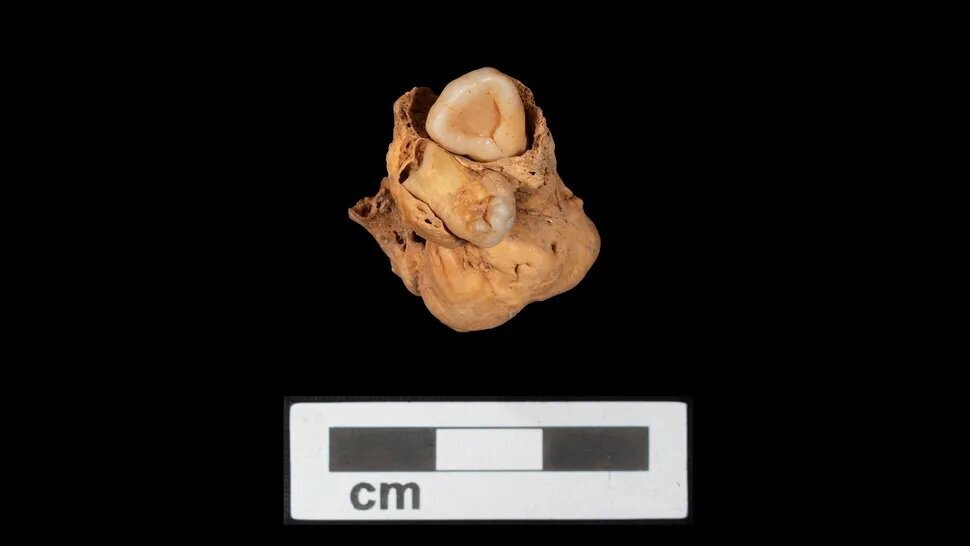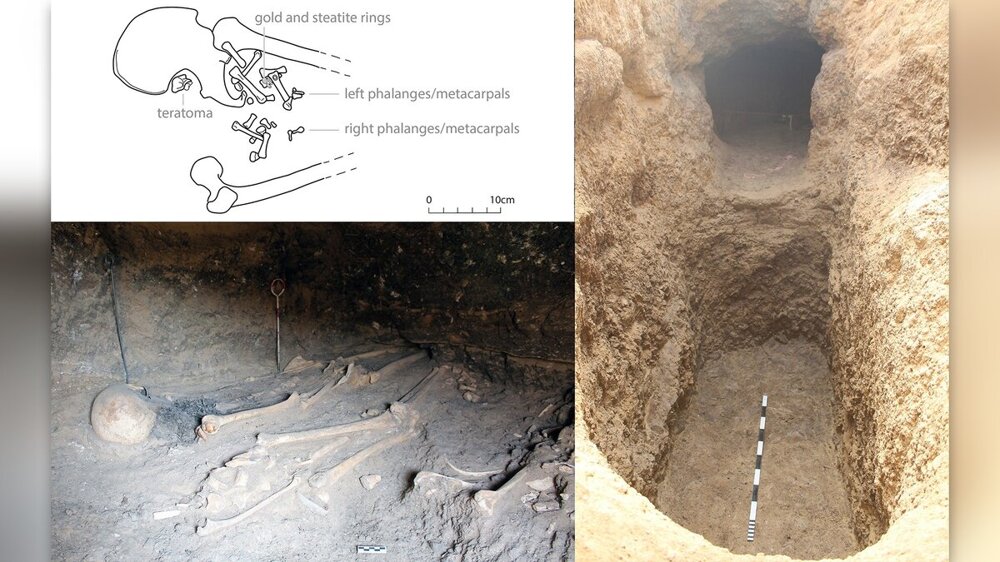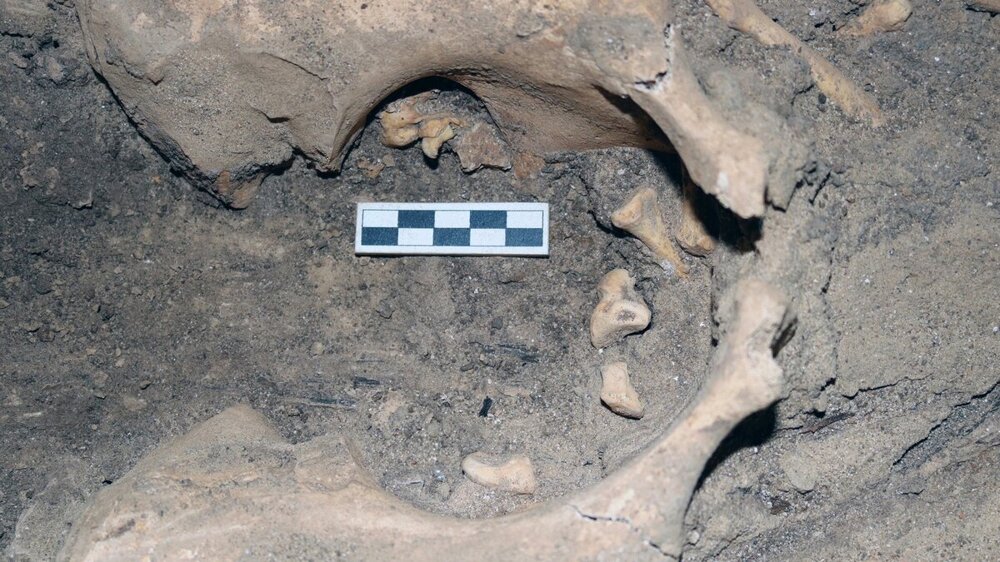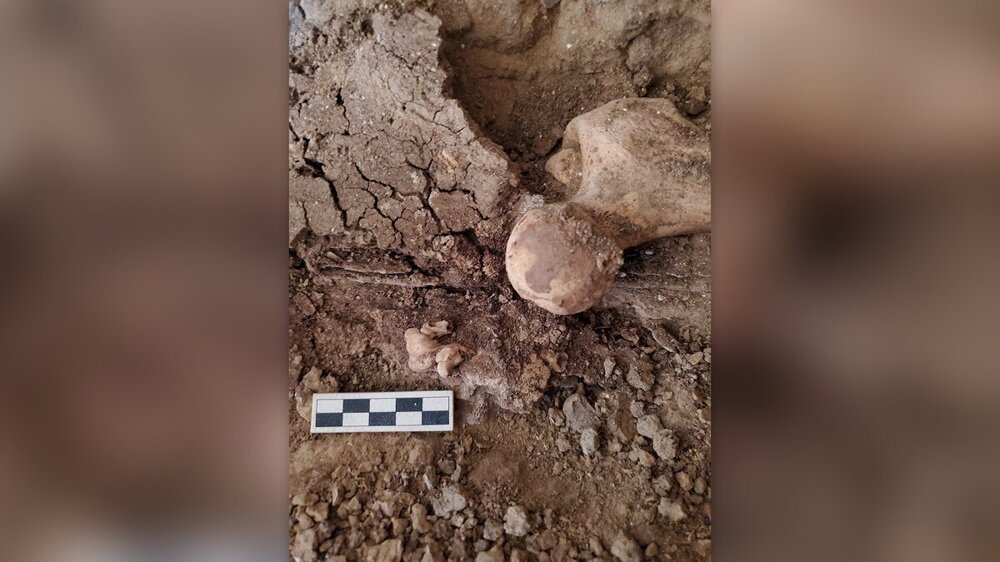An ancient tumor with teeth was discovered in an Egyptian burial (5 photos)
Archaeologists are studying four large ancient Egyptian cemeteries at Amarna. In one of the tombs, which consisted of a shaft and several burial chambers, researchers found the skeleton of a woman 18–20 years old, wrapped in a mat made of plant fibers. 
Teratoma.
Buried No. 3051, apparently, was quite wealthy, although the tomb was located in a cemetery of commoners. The grave goods included gold and soapstone rings on the hands. One of the rings was decorated with the figure of Bes, a deity who was considered the patron of the household, childbirth and expectant mothers. 
Grave No. 3 of the Northern Desert Cemetery in Amarna, Egypt. Right: the mine with the north chamber in the background. Bottom left: Buried 3051, far left. Top left: Drawing of the pelvic region of individual 3051, showing the location of the teratoma and the rings on the fingers.
During excavations, archaeologists noticed something unusual in the woman’s pelvic area: a bone mass with two depressions in which there were deformed teeth. The fact that the formation was located inside the pelvis and above the remains of the burial mat indicated that it was not a foreign object, but something that was in the woman’s body.
After analyzing possible explanations, the researchers came to the conclusion that the buried woman had an ovarian teratoma. 
Teratoma in the left sciatic notch.
A teratoma is a tumor that often forms in a woman's ovaries and is a tissue or even an organ that is atypical for the site where it develops: a teratoma may contain hair, bone tissue or teeth. This tumor can be either benign or malignant. It may not cause any symptoms, but it can sometimes cause pain, anemia, and other problems. 
One of the teeth is visible near the head of the femur.
Researchers note that the ring with the image of the Demon was on the deceased’s left hand, located directly above the pelvic area. Perhaps the amulet performed a “magical-medical” function: during her lifetime, the woman suffered from pain in the ovaries, and the Demon was supposed to protect her reproductive organs. 
Drawing of a ring with the figure of the Demon.
Before this, archaeologists knew of only 4 finds of ancient calcified teratomas - three in Europe and one in Peru, but the tumor from Amarna is the most ancient. The tomb in question dates back to around 1340 BC. The 20-year-old woman was probably already someone's wife, but she was probably working. It is known that women in Amarna may have been employed in construction projects, brewing beer, tending gardens or tending domestic animals. It is known that the capital of Egypt was located in Amarna during the reign of the reformer pharaoh Akhenaten. The city of Akhetaten (“Horizon of Aten”) was founded in 1346 BC, but did not last long: a few years after the death of the ruler, the capital was abandoned.






























